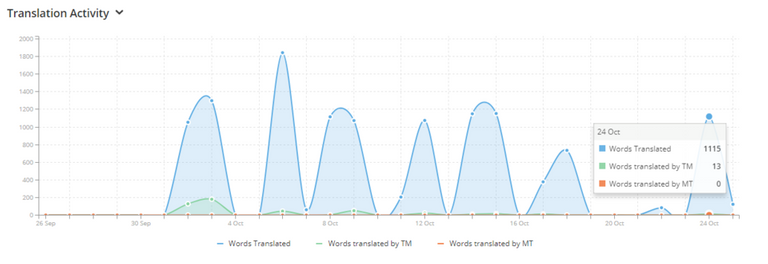The following is a report of my last Node.js translation, specifically the 9th version of changelog folder. I want to share my experience translating this kind of file. First, I will show some benefits of translating these files, so you can understand their importance.
When you are a user of a determined open source software, you will start your research about the functionalities that it offers. Probably you will make tests, some research work on the internet or even ask another user of the same software; in this process, you might find some issues, bugs or unnecessary content that harm the performance of the entire software because any program is perfect. As a platform user, you will purpose solutions to those errors you found, and you must warn the developers so they can make the necessary changes. You must know that those changes will be registered in a change log file that contains all the solutions purposed by the users.
Also, this file is public and anyone can see it to consult the changes that have been made through the releases. A change log file is mostly informative because those who consult it, will learn more about the open source software and about solutions of issues that could appear in another software.
Translating a change log file will allow people of the entire world to be informed about performance changes. Also, some of these can help improve other open source software, so it is a both sides winning.
Repository
https://github.com/nodejs/i18n
Project Details
Node.js is an open-source, cross-platform JavaScript run-time environment that executes JavaScript code outside of a browser. It lets developers use JavaScript to write Command Line tools and for server-side scripting to produce dynamic web page content before the page is sent to the user's web browser. Consequently, Node.js represents a "JavaScript everywhere" paradigm,[6] unifying web application development around a single programming language, rather than different languages for server side and client side scripts.
In resume, Node.js is a way to unify a lot of languages in one single code, so there are no support issues between them. A simple solution for a big problem.
I decided to translate this project because I'm an engineering student and programming covers a huge area of knowledge on my career. Also, I like sharing information and a way to do it is translating the content of a big project like this so people around the world can access to it and share it too.
Contribution Specifications
- Translation Overview
In this part of the 9th version of Node.js change log, you can find some new improvements in this project. For example, the reader can observe that there were a lot of useless an unused code; also, some collaborators found that some functions and modules were damaged or corrupted, so Node.js was in danger. These are examples that confirm the importance of updates.
The following image show some of the commits made in this part of the change log file.
- Languages
The original language of this change log is English and it was translated into Spanish, which is my native language. I have experience translating in projects like Loopring wallet and Yapbam. These projects make me grow and learn a lot about open source projects.
Some examples of my translation:
English
[<0>a13fbdd4c3</0>] - <1>test</1>: remove destructor from node_test_fixture (Daniel Bevenius) <2>#18524</2>
######Spanish
[<0>a13fbdd4c3</0>] - <1>test</1>: eliminar destructor de node_test_fixture (Daniel Bevenius) <2>#18524</2>
English
[<0>b5752ee6a4</0>] - <1>test</1>: fix require-deps-deprecation for installed deps (Benjamin Zaslavsky) <2>#17848</2>
Spanish
[<0>b5752ee6a4</0>] - <1>test</1>: reparar require-deps-deprecation para deps instaladas (Benjamin Zaslavsky) <2>#17848</2>
English
[<0>c34e2f4fc5</0>] - <1>win, build</1>: fix intl-none option (Birunthan Mohanathas) <2>#18292</2>
Spanish
[<0>c34e2f4fc5</0>] - <1>win, build</1>: reparar opción de intl-none (Birunthan Mohanathas) <2>#18292</2>
English
add performance.clear() (James M Snell) <0>#18046</0>
Spanish
agregar performance.clear() (James M Snell) <0>#18046</0>
- Word Count
This constribution consist of 1115 words
Learned Concepts
Along the change log I have seen a word that calls my attention and it is "eslint". I got curious and started a research. I found that "lint" is a programming tool, originally used in C, to detect suspicious, confusing or incompatible code. It looks like a common error checker but it is more than that because it verifies errors that the compiler can't detect. Currently, is a tool supported in all programming languages.
Now, knowing what is a "lint", I can explain the concept of an "eslint". "Eslint is an open source JavaScript linting utility that helps you overcome developer errors". In resume, is a lint designed for JavaScript. It is interesting because it has a lot of pluggable rules and allows the developers create new custom rules. I must say that this tool has been modified a lot of times to improve it and to get better its performance.
Proof of Authorship
You can visit my profile (navx) on Crowdin's website to find proof of authorship. Also, you can visit the Activity tab in the Node.js project and filter my contributions between October 24th and October 25th, which were the dates of the translation and the corrections respectively.
The next link, redirect to my crowdin profile:
https://crowdin.com/profile/navx

Greetings, @navx. Thanks for submitting your contribution!
Your contribution has been approved. Congratulations!
Your contribution has been evaluated according to Utopian policies and guidelines, as well as a predefined set of questions pertaining to the category.
To view those questions and the relevant answers related to your post, click here.
Chat with us on Discord
Thank you for your review, @alejohannes!
So far this week you've reviewed 3 contributions. Keep up the good work!
Hi @navx!
Feel free to join our @steem-ua Discord serverYour post was upvoted by @steem-ua, new Steem dApp, using UserAuthority for algorithmic post curation! Your post is eligible for our upvote, thanks to our collaboration with @utopian-io!